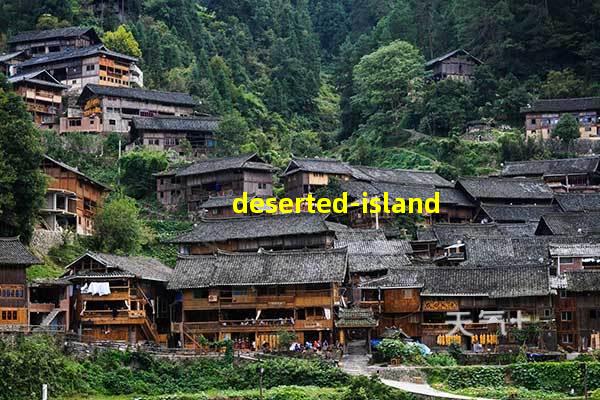珊瑚礁环礁荒岛求生记英文(如何保护珊瑚礁英语作文)
1、珊瑚礁环礁荒岛求生记英文
Surviving on a Remote Coral Reef Atoll Island
As a seasoned traveler, I have had my fair share of adventures, but nothing prepared me for the challenge of surviving on a remote coral reef atoll island. With its breathtaking beauty and unique ecosystem, this isolated paradise seemed like a dream destination. Little did I know that I would soon face the ultimate test of survival.
The first few days were spent exploring the vibrant underwater world, swimming alongside colorful fish and admiring the intricate coral formations. But a sudden storm changed everything. The strong winds and heavy rain left me stranded on the island, with no means of communication or contact with the outside world.
With limited resources, I had to rely on my survival instincts. Freshwater was scarce, so I had to collect rainwater and find natural springs. It was a constant struggle to stay hydrated in the scorching tropical heat.

Food was another challenge. I had to become resourceful and learn how to fish in the crystal-clear waters surrounding the island. Using makeshift tools and my knowledge of the sea, I managed to catch enough fish and gather edible plants to sustain myself.
Building a shelter became my top priority. With fallen branches, palm leaves, and vines, I constructed a rudimentary shelter that provided protection from the elements. It was far from luxurious, but it gave me a sense of security in this unfamiliar environment.
Loneliness and fear were constant companions, but I found solace in the island's breathtaking beauty. The stunning sunsets and starry nights reminded me of the power and wonders of nature.
Days turned into weeks, and weeks turned into months. Surviving on this remote atoll island became a way of life. It taught me the importance of resilience, adaptability, and appreciation for the simple joys of life.
Finally, on a lucky day, a passing fishing boat spotted me and rescued me from my temporary home. Leaving the island was bittersweet, as I had grown fond of its challenges and wonders.
This experience taught me that survival isn't just about physical strength, but also mental fortitude. It reminded me of the beauty and fragility of our planet, and the importance of preserving these precious ecosystems.
As I look back on my journey, I am grateful for the lessons learned and the memories made. The coral reef atoll island will forever hold a special place in my heart, reminding me of my ability to adapt in the face of adversity.
2、如何保护珊瑚礁英语作文
保护珊瑚礁的重要性

珊瑚礁是海洋生态系统中不可或缺的一部分,它们提供庇护和食物供给给各种海洋物种,同时也是许多旅游目的地的独特景观。然而,由于气候变化、海洋污染和人类活动的影响,珊瑚礁正面临着巨大的威胁。因此,保护珊瑚礁变得非常重要。
减少碳排放
海洋温度的升高会导致珊瑚白化现象,这是一种由珊瑚与共生藻类关系破裂引起的现象。为了保护珊瑚礁,我们需要减少碳排放,遏制气候变化的进一步加剧。大家可以选择步行、骑自行车或使用公共交通工具,减少车辆尾气的排放。此外,使用 renewable energy (可再生能源) 也是一个不错的选择。
保护海洋生态系统
我们应该避免使用含有化学物质的洗涤剂和化妆品,这些化学物质可能污染海洋并危害珊瑚礁的生存。另外,正确处理垃圾,尤其是塑料制品是非常重要的。一旦这些塑料制品进入海洋,它们将对珊瑚礁造成严重伤害,甚至导致生态系统崩溃。因此,大家应该做到垃圾分类,避免将塑料制品随意扔入海洋。
教育和推广
教育和推广是保护珊瑚礁的关键。我们需要向大众普及珊瑚礁的重要性,让更多的人了解它们所面临的威胁。政府和非政府组织应该提供教育项目和活动,向学生和公众传授珊瑚礁保护的知识和技巧。此外,旅行社和游客们也应该积极参与环保旅游活动,遵守保护海洋环境的规定。
结论
保护珊瑚礁是我们每个人的责任。通过减少碳排放、保护海洋生态系统和进行教育推广,我们可以共同努力,确保珊瑚礁的生存并保护海洋生态环境的健康。让我们共同建立一个更加可持续的未来,让珊瑚礁继续为我们提供美丽和独特的海洋景观。
3、珊瑚礁用英语怎么说
珊瑚礁用英语怎么说?
珊瑚礁是海洋中一种独特的生态系统,它由大量的珊瑚多样化构成。那么,在英语中,我们应该如何称呼这片美丽而神秘的海洋景观呢?
答案是:Coral Reef。

珊瑚礁是由小型水生动物珊瑚构建的石化结构,它们形成在温暖浅海的贝丘上。这些珊瑚礁是生物多样性最丰富的生态系统之一,为无数的海洋生物提供了栖息地和食物来源。
在海洋上空俯瞰,珊瑚礁群像一幅绚丽多彩的画卷,吸引着来自世界各地的旅游者。游客可以潜水或浮潜,近距离观察到珊瑚礁中生活的海洋生物,如彩色鱼类、海龟和无数其他奇异的生物。
然而,由于气候变化、过度捕捞以及污染等因素的不断威胁,许多珊瑚礁正面临毁灭的风险。保护和保持珊瑚礁生态系统的完整性对于我们的地球生态平衡至关重要。
如果你也是一个旅游达人,我鼓励你在探索珊瑚礁时做一个负责任的旅行者。尊重海洋环境,不触碰珊瑚,不乱扔垃圾,选择环保的潜水和浮潜方式,共同努力保护这片脆弱而神圣的自然宝藏。
所以,无论你身在何处,当你想起美丽的珊瑚礁时,请记住用英语称之为"coral reef",并以文明和友善的方式探索这一壮丽的海洋生态系统。
4、荒岛求生的英文
Surviving on a Deserted Island

Surviving on a deserted island can be both thrilling and challenging. Being completely isolated from civilization, you need to rely on your survival skills and resourcefulness to make it through. Here are some key tips to survive on a deserted island.
Finding Shelter
The first priority is to find shelter to protect yourself from the elements. Look for a natural shelter like caves or trees with dense foliage. If none are available, create a makeshift shelter using branches and leaves.
Water Source
Finding a clean water source is crucial for survival. Look out for streams, rivers, or natural wells. If none are visible, collect rainwater using broad leaves or make a solar water still by digging a hole and placing a container in the center, covered with a plastic sheet. The heat from the sun will evaporate the water, and it will condense on the plastic and collect in the container.
Food
Foraging for food becomes a priority next. Explore the surroundings for edible plants, fruits, and nuts. Learn about the local vegetation to avoid poisonous plants. Fishing, spearfishing, and setting up traps can also provide a source of protein.
Fire
Fire is essential for several tasks like cooking food, purifying water, and providing warmth. Collect dry leaves, twigs, and branches to create a fire pit. Use rocks to form a circle and create a base. Rub two dry sticks together or use flint to spark a fire.
Signaling for Help
To increase your chances of being rescued, make yourself visible to passing boats or planes. Use a signal mirror or shiny objects to reflect sunlight during the day. Build a fire and create a large smoke signal during the night.
Surviving on a deserted island can be a test of strength, resilience, and resourcefulness. By focusing on finding shelter, water, food, and signaling for help, you can increase your chances of surviving until rescue arrives. Always remember to stay positive and never lose hope.

.jpg)
.jpg)
.jpg)
.jpg)
.jpg)
.jpg)